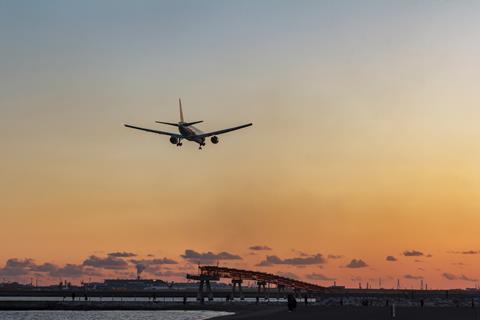Decarbonising aviation requires a global effort. Shell is working with customers and partners across Asia Pacific to accelerate aviation’s pathway to net-zero emissions.
Shell believes that the aviation industry can and needs to achieve net-zero emissions by 2050.
But the exact steps that need to be taken to deliver on this may look different in each market, and will take place at different moments.
This is a feature of the energy transition – that it progresses at different paces in different places around the world.

From an aviation perspective, this is particularly visible in Asia Pacific. The aviation industry is set to be an engine for growth and prosperity in the region, particularly as we look beyond the pandemic.
But despite these forecasts, the region is at a much earlier stage in scaling the use of SAF and other decarbonisation solutions than some other markets. It is vital that the sector works together to accelerate these efforts.
Decarbonising Asia Pacific aviation
IATA estimates that Asia Pacific will drive the biggest growth in global passenger numbers over the coming years, with more than half the total number of new passengers over the next 15 years predicted to come from this market1.
To ensure the growth of the region’s aviation industry can be delivered sustainably, this expansion will need to be accompanied by a significant increase in the use of decarbonisation solutions.
According to forecasts by Asia Pacific Airlines, by 2050, 40% of global SAF demand - expected to be between 450 to 500 million tonnes - will be coming from the region2.
To deliver on meeting this demand, there is a long road ahead for Asia Pacific’s aviation sector.
But there are already encouraging signs from across the industry. A number of countries are making commitments to different mandates and policies.
More airlines based in Asia are gradually and publicly making commitments to the use of SAF to meet net-zero emissions targets, and fuel suppliers and other players in the industry recognise the need to collaborate to supply SAF.
Moving beyond production
To accelerate this journey, we recognise that beyond the production of SAF, regional supply capabilities must be enhanced.
One of the fundamental elements that must be addressed is developing the right infrastructure to ensure that SAF can be supplied where airlines and airports need it.
To this end, I am proud that Shell recently announced that it will become the first supplier of SAF to the regional aviation hub of Singapore, helping airlines reduce aviation emissions.
Initially, Shell will import SAF in blended form and supply the fuel to Changi International Airport in Singapore. Shell will supply the SAF as part of our supply agreement with Neste, the producer of SAF3.
Shell has also completed the upgrading of its facilities in Singapore which will enable blending of neat SAF with jet fuel, allowing easier access to blended fuel to airlines in the region. This will enable smaller volumes of SAF to be transported to customers, allowing more flexibility.
The announcement represents a significant milestone for the aviation industry in Asia, enhancing SAF supply chain capabilities and thereby increasing customer’s access to SAF.
For the first time at Changi International Airport, airlines will now have the opportunity to reduce emissions by flying on SAF.
Working across the value chain
What is also significant about this announcement is that it builds on our ambition to develop the region’s SAF production capabilities.
Last year, we announced plans for a biofuels facility, pending a final investment decision, at the Shell Energy and Chemicals Park Singapore.
The facility has the ability to produce 550,000 tonnes of low-carbon fuels a year, which means it is set to be one of Asia’s largest biofuels facilities.
By turning hydrogen made from renewable resources and bio-feedstock into low-carbon fuels, it will help produce SAF, as well as renewable diesel for road transport and renewable chemicals.
From ensuring the right SAF supply chain infrastructure is in place to serve customers to working alongside them to share our expertise of using SAF globally, and looking ahead to producing SAF in the region, Shell is taking action.
These are all important pieces of the aviation decarbonisation puzzle that we are looking to help solve in Asia Pacific.
Delivering on the opportunity to decarbonise
While individual steps like this are important, it is essential that they are underpinned by collaboration across the aviation value chain.
Given how the energy transition is taking place at varying speeds across countries, collaboration is an aspect that must always consistently be focused on to enable progress.
There is a real opportunity to decarbonise aviation.
And we’re looking forward to working with customers and partners across Asia to accelerate aviation’s pathway to net-zero emissions.
Visit Shell Aviation on LinkedIn to find out more about nature-based solutions.
[2] https://www.airlineratings.com/news/asia-pacific-airlines-back-net-zero-carbon-emissions-by-2050/























